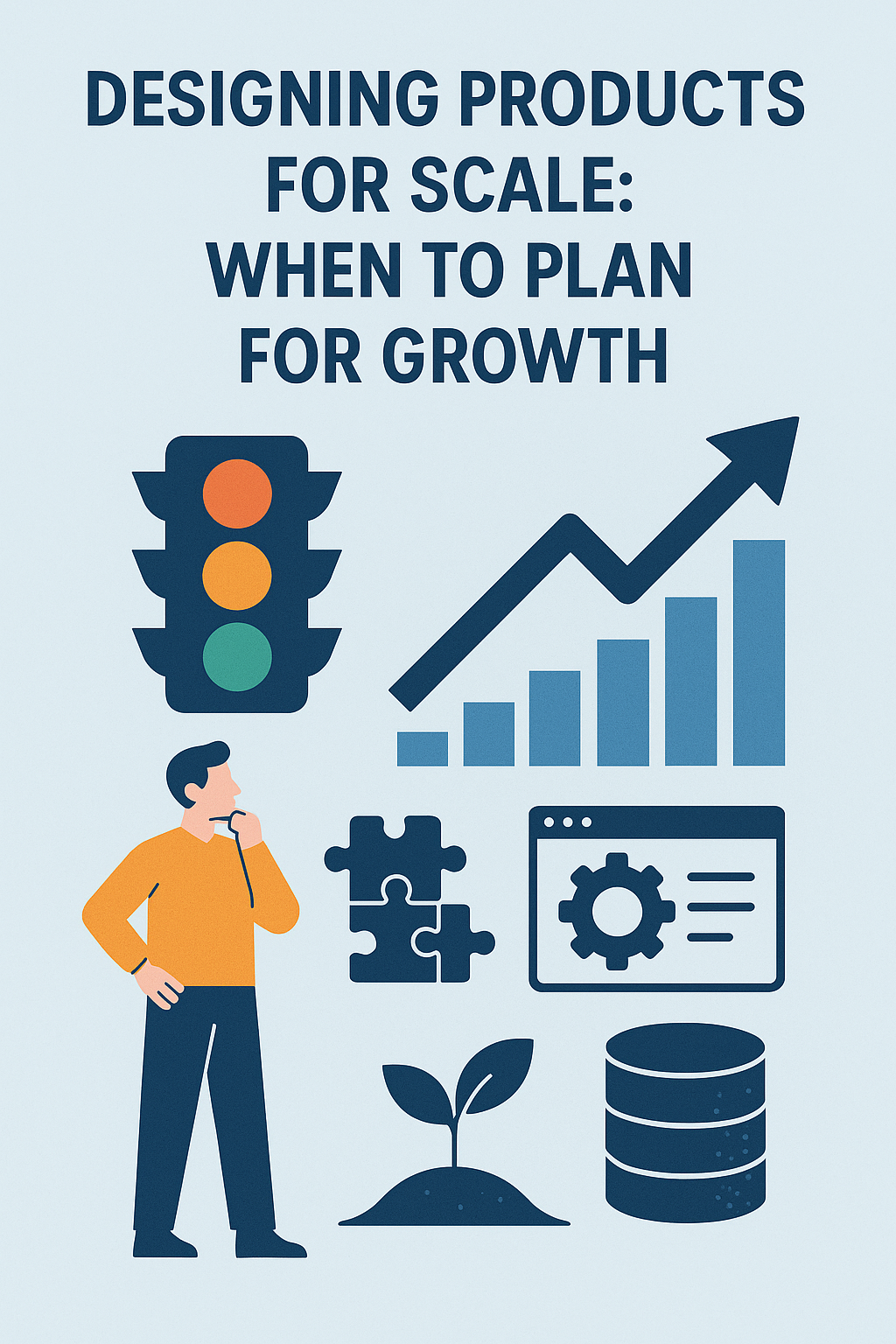🏗️ Designing Products for Scale: When to Plan for Growth

Introduction
Building a great product is challenging. But building a product that handles growth—millions of users, complex use cases, rapid feature expansions—is another level altogether.
Too often, startups either:
Over-engineer in anticipation of scale that never comes, or
Under-prepare and break under unexpected demand.
So when should you design for scale? And how do you do it without slowing innovation or wasting resources?
Let’s break it down.
1. 🚦 Start with the Right Priorities: Scale Later, Solve Now
Your first priority should not be scaling, but solving a real problem for a small set of users. Products like Airbnb, Slack, and Instagram began with simple MVPs. Only once traction began did they shift focus to architecture and scale.
Ask yourself:
Do I have product-market fit?
Are users coming back consistently?
Is performance becoming a bottleneck?
👉 Premature optimization is the enemy—design for today with just enough foresight for tomorrow.
2. 📈 Recognize the Signals That It's Time to Scale
You don't need to guess. Scale gives you signals. Some examples:
Your database is slowing down or queries time out.
User feedback mentions slowness or crashing.
Your support tickets increase due to bugs from edge cases.
Feature development slows because of tangled code or data flows.
When these things start to happen consistently, it's time to step back and refactor for growth.
3. 🧱 Build a Scalable Architecture (When It Matters)
Once you know scale is coming, your product needs to evolve. Here are some core architectural principles:
🪜 Horizontal Scaling Over Vertical
Scale across servers/services, not just by adding power to one machine.
📦 Microservices vs Monolith
If your monolith is becoming unwieldy, break out services by domain—but only when necessary.
🧩 Modular Codebases
Keep features isolated to minimize dependencies and tech debt.
📊 Caching & Load Balancing
Use Redis, CDNs, and load balancers early when performance matters.
4. 🧪 Design for Observability and Feedback Loops
Scaling isn’t just about infrastructure—it’s about visibility.
Integrate logs, metrics, and alerts (e.g., with tools like Datadog, Prometheus, or Sentry).
Implement feature flags and A/B testing early on.
Keep a close feedback loop with both users and internal teams.
You can’t scale what you can’t measure.
5. 🧠 Don’t Forget UX and Team Scalability
Scaling affects:
The product (can users still navigate easily?)
Your team (can multiple devs work in parallel?)
The organization (can teams ship features without breaking others?)
Design clear interfaces, use component libraries, and adopt design systems early to reduce chaos at scale.
6. 🌱 Plan for Scale in Phases
Here's a simple roadmap:
| Phase | Focus Area | Examples |
|---|---|---|
| MVP | Functionality | Build fast, hacky but working features |
| Early Growth | Modularization | Clean APIs, refactor critical paths |
| Product-Market Fit | Infrastructure | Load balancing, database optimization |
| Scaling | Team/process | CI/CD, observability, automated testing |
| Mature | Optimization | Cost-efficiency, internationalization, SLAs |
You don’t need all the answers at Day 1. But you do need the mindset.
Conclusion: Growth Is a Feature—Design It Thoughtfully
You don’t build a skyscraper with bamboo scaffolding, but you also don’t pour concrete for 50 floors when you only need five.
👉 Design for now. Plan for growth. Build incrementally.
Scaling is not just a technical exercise—it’s a product and people problem. With the right timing and principles, your product will not only handle growth—it will thrive through it.